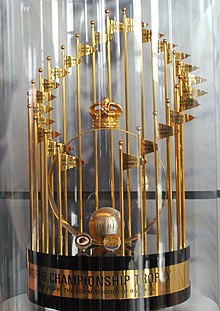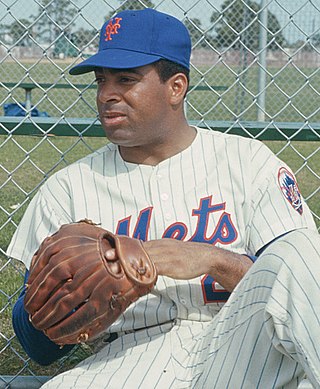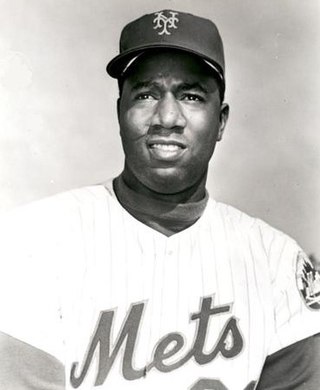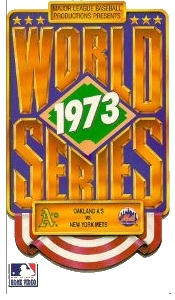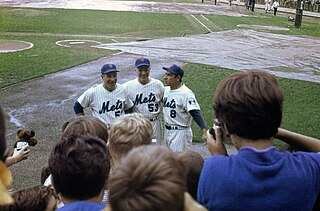Matchups
Game 1

| Team | 1 | 2 | 3 | 4 | 5 | 6 | 7 | 8 | 9 | R | H | E | |||||||||||||||||||||
|---|---|---|---|---|---|---|---|---|---|---|---|---|---|---|---|---|---|---|---|---|---|---|---|---|---|---|---|---|---|---|---|---|---|
| New York | 0 | 0 | 0 | 0 | 0 | 0 | 1 | 0 | 0 | 1 | 6 | 1 | |||||||||||||||||||||
| Baltimore | 1 | 0 | 0 | 3 | 0 | 0 | 0 | 0 | X | 4 | 6 | 0 | |||||||||||||||||||||
| WP: Mike Cuellar (1–0) LP: Tom Seaver (0–1) Home runs: NYM: None BAL: Don Buford (1) | |||||||||||||||||||||||||||||||||
With this win, the Orioles looked to be proving all the prognosticators right, as it was a dominant performance. Don Buford hit Tom Seaver's second pitch of the game for a home run, which just evaded Ron Swoboda's leaping attempt at catching it. The O's then added three more runs in the fourth when, with two outs, Elrod Hendricks singled and Davey Johnson walked. Mark Belanger then singled in a run, followed by an RBI single by pitcher Mike Cuellar. Buford capped the inning off by doubling in Belanger.
The Mets got their run in the seventh on a sacrifice fly by Al Weis. Orioles starter Mike Cuellar was the winner, allowing just that run in a complete-game effort.
Despite the opening-game loss, nobody on the Mets was discouraged. Tom Seaver – the game's losing pitcher – said years later "I swear, we came into the clubhouse more confident than when we had left it. Somebody – I think it was Clendenon – yelled out, 'Dammit, we can beat these guys!' And we believed it. A team knows if they've been badly beaten or outplayed. And we felt we hadn't been. The feeling wasn't that we had lost, but Hey, we nearly won that game! We hadn't been more than a hit or two from turning it around. It hit us like a ton of bricks." [8]
Game 2

| Team | 1 | 2 | 3 | 4 | 5 | 6 | 7 | 8 | 9 | R | H | E | |||||||||||||||||||||
|---|---|---|---|---|---|---|---|---|---|---|---|---|---|---|---|---|---|---|---|---|---|---|---|---|---|---|---|---|---|---|---|---|---|
| New York | 0 | 0 | 0 | 1 | 0 | 0 | 0 | 0 | 1 | 2 | 6 | 0 | |||||||||||||||||||||
| Baltimore | 0 | 0 | 0 | 0 | 0 | 0 | 1 | 0 | 0 | 1 | 2 | 0 | |||||||||||||||||||||
| WP: Jerry Koosman (1–0) LP: Dave McNally (0–1) Sv: Ron Taylor (1) Home runs: NYM: Donn Clendenon (1) BAL: None | |||||||||||||||||||||||||||||||||
Mets pitcher Jerry Koosman pitched six innings of no-hit ball, trying to match Don Larsen's World Series no-hit feat. Donn Clendenon provided him a slim lead with a home run in the fourth inning.
However, Koosman lost the no-hitter and the lead in the seventh inning as Paul Blair singled, stole second, and scored on a single by Brooks Robinson. But that was it for the Orioles' offense. The Mets pushed across a run in the top of the ninth on back-to-back-to-back singles by Ed Charles, Jerry Grote, and Al Weis, the latter scoring Charles. This proved to be the decisive run, and Orioles starter Dave McNally took the loss.
Koosman had trouble finishing the game, as he issued two-out walks in the bottom of the ninth to Frank Robinson and Boog Powell. Ron Taylor came on to retire Brooks Robinson for the final out and earn the save.
Game 3

| Team | 1 | 2 | 3 | 4 | 5 | 6 | 7 | 8 | 9 | R | H | E | |||||||||||||||||||||
|---|---|---|---|---|---|---|---|---|---|---|---|---|---|---|---|---|---|---|---|---|---|---|---|---|---|---|---|---|---|---|---|---|---|
| Baltimore | 0 | 0 | 0 | 0 | 0 | 0 | 0 | 0 | 0 | 0 | 4 | 1 | |||||||||||||||||||||
| New York | 1 | 2 | 0 | 0 | 0 | 1 | 0 | 1 | X | 5 | 6 | 0 | |||||||||||||||||||||
| WP: Gary Gentry (1–0) LP: Jim Palmer (0–1) Sv: Nolan Ryan (1) Home runs: BAL: None NYM: Tommie Agee (1), Ed Kranepool | |||||||||||||||||||||||||||||||||
Agee led off the game for the Mets with a home run off Jim Palmer, then saved at least five runs with his defense. With two out in the fourth and Oriole runners on first and third, Agee raced to the 396-foot (121 m) sign in left-center and made a backhanded running catch of a drive hit by Elrod Hendricks. In the seventh, the Orioles had the bases loaded with two out, but Agee made a diving grab of a line drive hit by Paul Blair in right-center.
Ed Kranepool added a home run and Jerry Grote an RBI double for the Mets, while Gary Gentry pitched 6+2⁄3 shutout innings and helped his own cause with a second inning two-run double. Nolan Ryan, making his only World Series appearance of his 27-year career, pitched the final 2+1⁄3 innings (benefiting from Agee's second catch) and earned a save.
Game 4
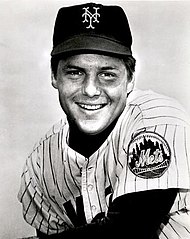
| Team | 1 | 2 | 3 | 4 | 5 | 6 | 7 | 8 | 9 | 10 | R | H | E | ||||||||||||||||||||
|---|---|---|---|---|---|---|---|---|---|---|---|---|---|---|---|---|---|---|---|---|---|---|---|---|---|---|---|---|---|---|---|---|---|
| Baltimore | 0 | 0 | 0 | 0 | 0 | 0 | 0 | 0 | 1 | 0 | 1 | 6 | 1 | ||||||||||||||||||||
| New York | 0 | 1 | 0 | 0 | 0 | 0 | 0 | 0 | 0 | 1 | 2 | 10 | 1 | ||||||||||||||||||||
| WP: Tom Seaver (1–1) LP: Dick Hall (0–1) Home runs: BAL: None NYM: Donn Clendenon (2) | |||||||||||||||||||||||||||||||||
Game 4 was mired in controversy. Tom Seaver's photograph was used on some anti-war Moratorium Day literature being distributed outside Shea Stadium before the game, although the pitcher stated that his picture was used without his knowledge or approval. A further controversy that day involved the flying of the American flag at Shea Stadium. New York City Mayor John Lindsay had ordered flags flown at half staff to observe the Moratorium Day and honor those who had died in Vietnam. Many were concerned, including 225 wounded servicemen who were attending the game, and Baseball Commissioner Bowie Kuhn announced that the American flag would be flown at full staff at Shea for Game 4. [9]
Tom Seaver atoned for his Game 1 ineffectiveness by shutting out the Orioles through eight innings. Once again, Donn Clendenon provided the lead with a homer in the second off Game 1 winner Mike Cuellar, who allowed just that run over seven solid innings. In the third inning, after arguing ball-strike calls too strenuously with plate umpire Shag Crawford, Earl Weaver of the Orioles became the first manager since 1935 to be ejected from a World Series game.
In the top of the ninth, Seaver ran into trouble. Frank Robinson and Boog Powell hit back-to-back one-out singles to put runners on first and third. Brooks Robinson then hit a sinking line drive towards right that Mets right fielder Ron Swoboda dove for and caught just inches off the ground. Frank Robinson tagged and scored, but Swoboda's heroics kept the Orioles from possibly taking the lead. Elrod Hendricks then flied out to Swoboda to end the inning.
In the bottom of the tenth, Jerry Grote led off by blooping a double to left. Al Weis was intentionally walked to set up a force play and get to the pitcher's spot in the lineup. Mets manager Gil Hodges sent J. C. Martin up to hit for Seaver. Martin laid down a sacrifice bunt, but Orioles reliever Pete Richert hit Martin in the wrist with his throw to first, and the ball went down the right field line. Rod Gaspar, running for Grote, came around to score the winning run.
Replays showed Martin running inside the first-base line, which appeared to hinder Richert's ability to make a good throw and Orioles second baseman Davey Johnson from catching it. Subsequent controversy focused on MLB rule 6.05 (k), [10] which says that a batter shall be out—with the ball dead and the runners returned to their original bases—if "...In running the last half of the distance from home base to first base, while the ball is being fielded to first base, he runs outside (to the right of) the three-foot line, or inside (to the left of) the foul line, and in the umpire's judgment in so doing interferes with the fielder taking the throw at first base."
The umpires' judgment was that Martin did not interfere.
Game 5
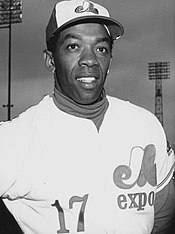
| Team | 1 | 2 | 3 | 4 | 5 | 6 | 7 | 8 | 9 | R | H | E | |||||||||||||||||||||
|---|---|---|---|---|---|---|---|---|---|---|---|---|---|---|---|---|---|---|---|---|---|---|---|---|---|---|---|---|---|---|---|---|---|
| Baltimore | 0 | 0 | 3 | 0 | 0 | 0 | 0 | 0 | 0 | 3 | 5 | 2 | |||||||||||||||||||||
| New York | 0 | 0 | 0 | 0 | 0 | 2 | 1 | 2 | X | 5 | 7 | 0 | |||||||||||||||||||||
| WP: Jerry Koosman (2–0) LP: Eddie Watt (0–1) Home runs: BAL: Dave McNally (1), Frank Robinson (1) NYM: Donn Clendenon (3), Al Weis (1) | |||||||||||||||||||||||||||||||||
Dave McNally shut out the Mets through five innings and helped himself with a two-run homer in the third inning. Frank Robinson homered in the inning as well, and the Orioles looked to be cruising with a 3–0 lead.
The Mets, however, benefited from two questionable umpire's calls. In the top of the sixth inning, Mets starting pitcher Jerry Koosman appeared to have hit Frank Robinson with a pitch, but plate umpire Lou DiMuro ruled that the pitch hit his bat before hitting him and denied him first base. Replays showed, however, that Robinson was indeed hit first — the ball struck him on the hip, then bounced up and hit his bat.
In the bottom of the sixth, McNally bounced a pitch that appeared to have hit Mets left fielder Cleon Jones on the foot, then bounced into the Mets' dugout. McNally and the Orioles claimed the ball hit the dirt and not Jones, but Mets manager Gil Hodges showed the ball to DiMuro, who found a spot of shoe polish on the ball and awarded Jones first base. McNally then gave up Series MVP Donn Clendenon's third homer of the series (a record for a five-game World Series that was tied by the Phillies' Ryan Howard in the 2008 Classic and by Boston’s Steve Pearce in the 2018 Series) to cut the lead to 3–2.
However, the renowned "shoe polish" incident may not be such a simple, straightforward matter. On August 22, 2009, at the 40th-anniversary celebration of the Mets' 1969 Championship, held at their new stadium, Citi Field, Jerry Koosman stated in several media interviews [11] that, in actuality, Hodges had instructed him to rub the ball on his shoe, which he did, and after that Hodges showed the ball to the umpire. Koosman's claim does not necessarily mean that the ball did not strike Jones on the foot, nor does it even mean that the polish on the ball seen by the umpire was put there by Koosman – it is certainly conceivable that there was already a genuine spot of polish on the ball, which easily could have escaped Koosman's notice as he hastily created the fraudulent one. In any case, Koosman's allegation at the very least adds an intriguing layer of uncertainty and possible chicanery to an already legendary event. Koosman was known for his sense of humor, and his love of practical jokes when he was an active player. Therefore, his claim of having scuffed the ball against his own shoe could be a ruse. Besides, there are other stories which have been told about that incident, by other players who were in the Mets dugout that day. One of those stories comes from Ron Swoboda, who said during an interview on the Mets 1986 25th Anniversary video, that when the ball came bounding into the Mets dugout, it hit an open ball bag under the bench, and several batting / infield practice balls came spilling out on the dugout floor. According to Swoboda, one could not distinguish the actual game ball from any of the ones that spilled out of the bag. Hodges quickly looked down, grabbed a ball that had a black streak on it, and walked it out to the home plate umpire, who then awarded first base to Jones. In any case, this incident provided baseball with yet another entertaining legend, about which the absolute truth will probably never be known.
The Mets then tied the score in the seventh on a home run by the unheralded and light-hitting Al Weis. Weis hit only seven home runs in his big league career; this was the only home run he hit at Shea Stadium and, in fact, was the only home run he hit playing for the home team in any major league park. Weis led all batters in the series with a .455 average.
The winning runs scored in the eighth as Game 4 defensive hero Ron Swoboda doubled in Jones with the go-ahead run. Swoboda then scored when Jerry Grote's grounder was mishandled by first baseman Boog Powell, whose throw to first was then dropped by pitcher Eddie Watt in an unusual double error. Jerry Koosman got the win, his second of the series. With two outs in the top of the ninth inning, Koosman faced Orioles second baseman Davey Johnson (who, coincidentally, later managed the Mets to their second World Series championship in 1986). After taking a pitch of two balls and one strike, Johnson hit a fly-ball out to left field which was caught by Cleon Jones. [12] After a shaky third inning, Koosman settled down to retire 19 of the next 21 batters he faced, giving up a single and a walk.
Karl Ehrhardt, a Mets fan known as "the sign man" at Shea Stadium, held up a sign that read There Are No Words soon after the final out was made. The sign made an appearance in the Series highlight film. Immediately following the victory, thousands of fans rushed onto the field and the Mets were forced to retreat to their locker room. [12] Bill Gleason, a sports columnist for the Chicago Sun-Times, alleged that this feat would not repeated again until Disco Demolition Night, [13] an event which saw many people rush onto the playing field in Comiskey Park just before the second game of a doubleheader between the Chicago White Sox and Detroit Tigers was scheduled to begin on July 12, 1979. [13]
In all four Mets victories, their starting first baseman hit a home run: Donn Clendenon in Games 2, 4 and 5, and Ed Kranepool in Game 3. The expression, "Good pitching defeats good hitting", was never more evident than in this World Series; Baltimore collected only 23 hits for a .146 batting average, both team lows for a 5-game series. After winning Game 1 in which the Orioles had only six hits, Baltimore only managed a .134 batting average (17-for-127) over the next four games. Boog Powell led the Orioles with five hits and a .263 average—but all were non-scoring singles (although one advanced Frank Robinson to third base to set up Swoboda's defensive heroics). Don Buford collected two hits in four at-bats in the opening game, including a lead-off home run against Tom Seaver, but went 0-for-16 over the next four games. Paul Blair went 2-for-20, Davey Johnson 1-for-16, Frank Robinson 3-for-16, Brooks Robinson 1-for-19, and Mark Belanger 3-for-15. The Orioles offense only managed four extra-base hits off Mets pitching in the five-game series, all in the first and last games. The Mets won despite below-average performances from Jerry Grote, who went 4-for-19, Tommie Agee, who went 3-for-18, Cleon Jones, who went 3-for-19, Bud Harrelson, who went 3-for-17 and Ed Charles, who went 2-for-15.
